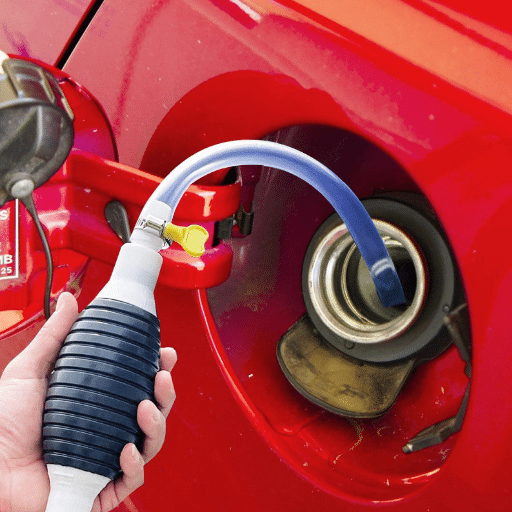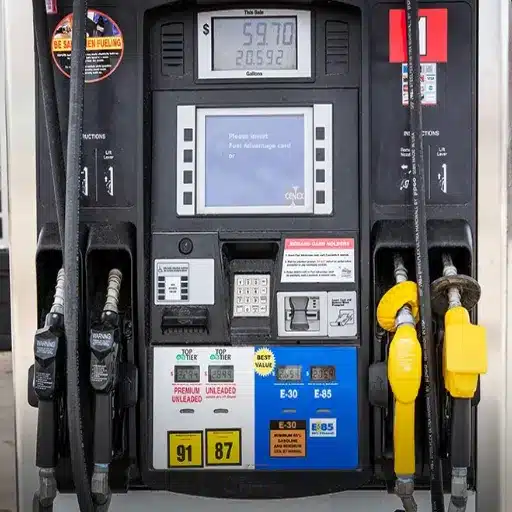Previously, sitting in an electric vehicle while it charges might have seemed silly. However, it now raises several safety concerns for many, including fears of electromagnetic exposure and potential technical issues. As electric vehicles become more popular, it becomes all the more paramount for a person to know every aspect of vehicle use. The following article discusses the entire science, technology, and regulations involved in charging. It also tackles some of the myths and provides straightforward insight backed by evidence. So, whether you’re brand new to the world of EVs, considering joining, or simply curious, this guide will provide you with the knowledge to answer confidently: Is it safe to sit in an electric car while it is charging? Stay tuned as we bring some flashlights into this shadowy area!
Understanding Electric Vehicles (EVs)
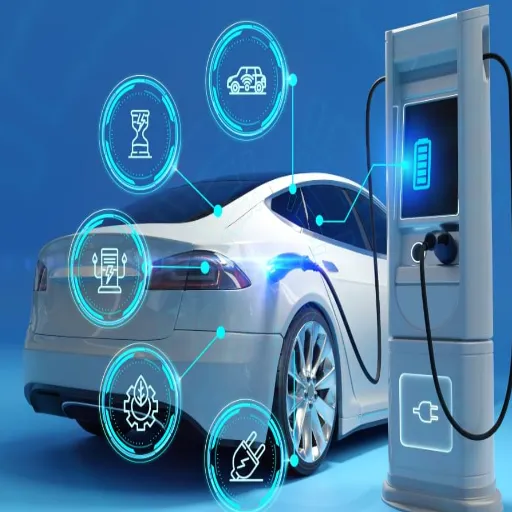
Safety First: Sitting inside an EV while it is charging is perfectly safe: Modern EVs are equipped with advanced systems that protect against any electrical hazards to the passengers. The charging system is well-insulated and contains multiple layers of protection against any electricity flowing into the car’s interior. Additionally, these vehicles and equipment must meet stringent regulatory standards and pass rigorous safety testing before reaching the market. Thus, occupants may happily remain inside the car during charging without any worries.
What is an Electric Vehicle?
An automotive vehicle powered by electricity stored in batteries, as opposed to internal combustion engines that burn fossil fuels, is known as an electric vehicle. Many varieties of electric vehicles exist, including battery electric vehicles, those that run entirely on electric power and release no emissions on the tailpipe (BEVs). These plug-in hybrid electric vehicles inject a little extra power from gas engines. These hybrid electric vehicles offer flexibility in power delivery, transitioning between electric motors and gas engines (PHEVs), as well as standard internal combustion engine-hybrid electric vehicles that obtain electricity through regenerative braking.
Modern-day EVs employ rechargeable lithium-ion batteries that have a reputation for being high-energy-density, long-lasting, and efficient. Present-day electric vehicles generally can cover between 200 and 400 miles on a single charge, while some premium versions boast ranges exceeding 500 miles. Charging systems continue to expand rapidly, including ultra-fast chargers that require only 20-30 minutes to provide an 80% charge.
EVs have become an environmental favorite for reducing greenhouse gases and air pollution, but also for their low operating costs. Research indicates that EV owners typically save on expenses related to fuel and maintenance compared to the average gasoline-powered vehicle. Governments across the globe are moving to encourage the adoption of EVs with tax credits, rebates, or investments in public EV charging networks. With advances in battery systems and investments in renewable energy, EVs must be the very first step toward a more sustainable transport future.
Components of Electric Cars
Technology: Electric cars utilize a variety of essential components to achieve an efficient and sustainable operating system. They consist of:
Battery Pack
Battery packs serve as the primary source of energy for an electric car and are essentially composed of lithium-ion cells. In the recent past, battery technology has undergone significant improvements in energy density, enabling a host of EVs to boast ranges above 300 miles on a single charge. For instance, the Tesla Model S offers ranges in excess of 400 miles, thus setting the standard for range elegance.
Electric Motor
Electric motors propel electric vehicles using electrical energy. These motors are highly efficient, with some recording efficiency levels of over 90% compared to internal combustion engines, which typically operate at approximately 30%. The motor also brings instant torque and swift acceleration.
Power Electronics Controller
The inverter controls energy flow from the battery to the motor, manipulating speed and torque, and recaptures energy during regenerative braking. Regenerative brakes enable EVs to recover and store energy that would usually be lost, thus increasing efficiency.
Onboard Charger
The onboard charger converts AC power from the charging station or household outlet into DC power, charging the battery. Contemporary chargers maintain the ability to fast-charge: for instance, DC fast chargers can charge some EVs up to 80% in 30 minutes or less.
Thermal Management System
This structure maintains perfect operating temperatures from the battery to all electronic components, ensuring permanent performance and longevity. With the advanced thermal management system for heat control, electric vehicles promise safe and reliable operation even in the harshest of weather conditions.
Charging Port
The actual port allows the vehicle to be connected with external power sources for recharging. With standardized designs of the port, such as CCS and CHAdeMO, charging accessibility increased, allowing for excellent compatibility across different charging network systems.
Each element in itself is essential for affording electric vehicles real-life efficiency, a green lifestyle, and seamless daily integration.
How EVs Operate During Charging
Electric vehicles operate the charging process through a set of activities that are well-coordinated for efficiency and battery health. Once the EV is plugged into the charging station, the current is supplied to the onboard charger of the vehicle, which converts it into a good form to be stored in the battery, mainly changing AC power into DC power. The onboard charger controls the charging process, preventing overcharging and adjusting charging rates based on the battery’s current state.
| Charging Level | Power Source | Range Per Hour | Typical Use |
|---|---|---|---|
| Level 1 | Regular household outlet | 2-5 miles | Emergency/overnight |
| Level 2 | Powerful AC currents | 10-60 miles | Home/workplace |
| DC Fast | Fast DC chargers | 100+ miles in 20-30 min | Highway/travel |
The newest advancements reveal that most EVs nowadays support bi-directional charging, where power can flow back to the grid or to home battery systems. This innovation enhances energy storage solutions and ensures grid stability during periods of high demand. As EVs continue to gain acceptance, these technologies are accelerating toward making charging fast, safe, and environmentally friendly.
Safety Concerns While Charging
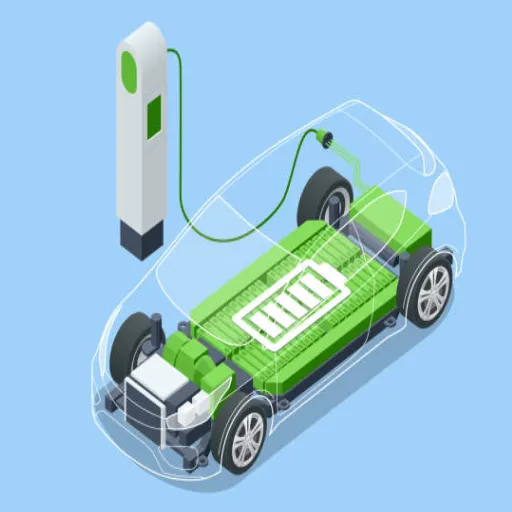
Proper procedure ensures safety when charging electric vehicles. Despite this, some dangers warrant special attention:
⚠️ Overheating
Ensure the charging cable and port are functioning correctly to prevent overheating, which can cause damage or become a fire hazard.
💧 Water Exposure
Charging should not occur in a rain-soaked or flooded place, as it poses an electrical hazard.
🔧 Damaged Equipment
Any wear or damage to the charging cable and connector should be noted and replaced as necessary.
✅ Certified Equipment
Only use charging stations and cables recommended or approved by the manufacturer to ensure compatibility with the device and safety.
If one adheres to these safety precautions, the risk will be minimized, and charging will be safe.
Potential Risks of Sitting in an EV While Charging
Much is being said about the practice of ‘sitting in an EV while charging.’ Essentially, it is considered safe due to the stringent safety standards that manufacturers must adhere to for electric vehicles. But there are certain risks and precautions one must be aware of during these hours.
- Overheating Concerns: Overheating is the most common concern, as it can occur if the battery management system malfunctions or if the EV is continuously exposed to extreme temperatures for prolonged periods. Contemporary electric vehicles are equipped with effective cooling systems to prevent such mishaps; however, users should always take the time to review battery health and charging conditions.
- Equipment Damage: Another thing to worry about is the remote possibility of damaging the equipment or infrastructure due to the charging itself. This means that maybe a damaged charging cable or an improperly maintained charging station could be a source of electrical shock or cause a short circuit. Studies have shown that, although these instances are rare, faulty equipment indeed poses serious risks. This raises the importance of checking the charging setup before use.
- Electromagnetic Fields (EMFs): Every concern exists regarding the electromagnetic fields (EMFs) generated during charging. EMFs generated by EVs are generally within the safety limits prescribed by regulatory authorities. However, during charging, prolonged exposure may be an issue for a specific class of people who are sensitive to EMF. In this regard, little evidence has been found to suggest serious health effects, though longer-term studies are still underway.
- Weather Considerations: Lastly, sitting inside an EV during a thunderstorm while charging might involve the risk of a lightning strike. The EV should be able to cope with electrical surges through the grounding system; however, being inside during a severe storm should be done with caution.
It should be minimized and hazards reduced, so a driver can safely charge their EV. This can be achieved by ensuring awareness of the risks involved, regular maintenance, and adhering to the safe recommendations provided by EV manufacturers.
Electric Car Charging Safety Protocols
When charging the vehicle, safety considerations should always be taken into account to protect the vehicle from any damage and also keep its occupants safe. Thus, for a smooth, hassle-free, and safe charging, the following guidelines are paramount:
🔍 Visual Inspection of Charging Equipment
Inspect the electric vehicle charging cable, connector, and outlet for any signs of wear and tear or damage before plugging your vehicle into its power source. A damaged cable or connector can allow for electrical faults to occur and may even lead to a fire. Industry figures indicate that faulty equipment accounts for a significant percentage of all EV-related issues.
🏠 Charge in Secure Settings
Use charging stations located in dry and well-ventilated areas. Never charge your vehicle in a place that is prone to flooding, or when the ground around the charger is wet; water can cause an electrical hazard. Industry experts recommend installing home chargers in garages or covered areas for added protection.
📋 Follow Manufacturer’s Guidelines
Manufacturers typically provide detailed instructions for the safe handling of their charging systems. Such instructions normally specify maximum charging currents, compatible charging levels (Level 1, Level 2, or DC Fast Charging), and temperature thresholds to ensure optimal performance. Sticking to these norms will avoid overloading, consequently increasing battery life.
🔋 Do Not Overcharge
Electric vehicles nowadays have battery management systems that stop the charging process as soon as the battery reaches its full capacity. Despite this, scheduling charging during the off-peak hours and unplugging once the charging is complete goes a long way in preventing unnecessary energy wastage, which also contributes to battery wear.
⚡ Surge and Lightning Protection
Thunderstorms are particularly hazardous with respect to charging due to the potential for power surges. Surge protectors may thus be used, or it might be best to unplug your vehicle if severe weather is expected. Severe surges might deliver a knockout punch to the charger and the vehicle battery.
🔧 Regular Maintenance of Charging Infrastructure
For installations at homes, regular maintenance by a certified electrician is required to ensure that the installations are safe and efficient, with all electrical connections. Public charging stations may undergo scheduled maintenance, but reporting any issue as soon as it is identified ensures safety for everyone.
By following these measures and remaining vigilant, the owner can confidently charge their vehicle and contribute to a safe and sustainable adoption of electric mobility.
Best Practices for Charging Your Electric Car
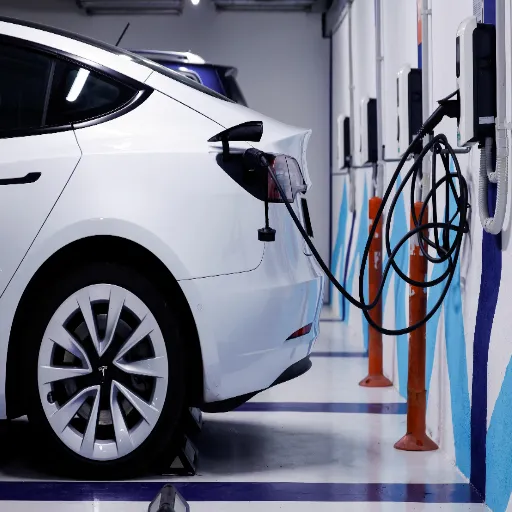
- Use the Right Charger: Always use a charger compatible with your electric vehicle to prevent damages and ensure efficient charging.
- Charge During Off-Peak Hours: Charge your electric vehicle during off-peak hours to save money and relieve stress on the electrical grid.
- Avoid Overcharging: Unplug your EV as soon as it is fully charged to avoid battery deterioration over time.
- Keep the Battery Between 20% and 80%: Maintaining the battery within this range helps prolong the EV battery’s lifespan.
- Keep an Eye out for Charging Temperatures: Avoid charging for extended periods in excessive heat or cold, as it can affect the battery’s performance.
By following these simple tips, EV owners can enjoy a safer and more efficient charging experience while maintaining the health of their batteries for the future.
When to Sit in Your EV During Charging
Sitting inside your EV during the charging process is safe and, in some situations, practical; however, one should consider factors such as comfort and efficiency. Modern EVs come fitted with the best safety systems, thereby allowing passengers to stay inside the vehicle while charging. Many EVs will enable you to keep the climate control system on, which is powered by the battery; this can be particularly helpful in extreme weather conditions. Long-term use of heating or cooling, however, will slightly increase charging time because some energy is used to power these systems rather than the battery.
At public fast-charge stations where an individual can spend 20 to 45 minutes charging the vehicle, staying inside the car can feel convenient. However, the recommendation for home or work L1 or L2 charging (which takes hours) may be to step outside. Safety standards for charging cables and connectors are a matter of concern; therefore, they comply with safety standards to prevent adverse electrical effects on individuals. For any processes involved in safely and efficiently charging your EV, the industry still recommends conforming to the guidelines set by your EV manufacturer, irrespective of whether you are in or out of your vehicle.
How to Charge Your Electric Car Safely
Charging an electric car is safe when there is a proper setup and knowledge of the equipment to be used, and when following industrial guidelines. Use secure and efficient Level 1 (120V) or Level 2 (240V) chargers, respectively. Based on the newest info published by the industry, a Level 1 charger usually gives about 3 to 5 miles of range per hour, whereas a Level 2 charger provides 12 to 60 miles per hour; hence, the Level 2 charger will be a more suitable choice for a car owner who is looking to get faster charging.
Ensure the charging station or outlet is installed by a licensed electrician and that it is inspected. This dramatically reduces the chance of an electrical fault or tripping the circuit. Then, you should always check your charge cable or connector for visible damage before using it.
Whenever charging outdoors, ensure the charging site remains dry and free from puddles that could pose electrical hazards. Modern EV chargers are equipped with safety features, including automatic shutoff and surge protection, among others, to enhance reliability. Using extension cords or adapters that are not approved for use would constitute a violation of the manufacturer’s advice against using them, as they can become a potential hazard due to overheating or burning.
Lastly, consider monitoring the battery charging parameters according to your EV’s specifications. Charging limit optimization for battery life and performance is achieved in most electric vehicles with a recommended charging threshold of 80% or 90%. Then, it is a worthy investment to have either a smart charger or a mobile app-connected system that helps you keep an eye on the charging process and automatically set limits on it. This way, you can be assured of both efficiency and safety at the same time.
Monitoring EV Charging Status
Observing charging status in EVs is not just for safety; it also promotes efficient charging methods. The latest charging stations and EVs have monitoring systems to update with real-time status on the charging progress. For example, many EVs will display key information such as the percentage of charge level, time remaining until full charge, and charging speed (kilowatts). Such tools become necessary when charging is to be tracked and managed efficiently.
| Charger Type | Power Range | Charging Speed | Time to 80% |
|---|---|---|---|
| Home Level 2 | 7.2 kW average | 20-30 miles/hour | 6-8 hours |
| DC Fast Chargers | 50-350 kW | Variable by model | 20-30 minutes |
Additionally, some apps and innovative charging systems will also send notifications when charging is finished or if there are any interruptions in the charging process. Usage statistics may also be displayed by some applications, allowing customers to track the amount of electricity consumed during each session and its associated cost. Using these details, EV owners can now enhance energy efficiency and enjoy a hassle-free charging experience.
Common Myths and Misconceptions
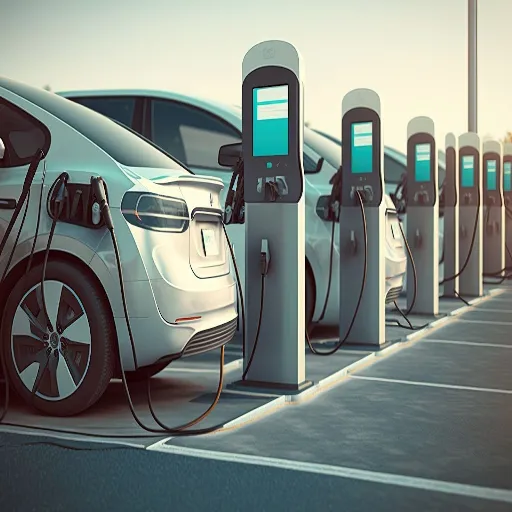
❌ Myth 1: EVs Have Limited Range
It is a widespread belief that EVs cannot travel long distances on one charge. With many EVs now capable of covering a range of more than 200-300 miles, and this range constantly increasing with newer and more advanced battery technologies, the charging infrastructure is continually improving. Fast chargers are now being installed across highways to facilitate long-distance travel.
❌ Myth 2: Charging Takes Too Long
Charging an EV takes longer than filling a gas car. Nevertheless, many EVs now come equipped with fast charging that can recharge 80% of the battery in 30 minutes or less. On a day-to-day basis, almost all owners charge their cars overnight at home, thus charging time stays largely irrelevant.
❌ Myth 3: EVs Are Too Expensive
There can be varying costs, depending on whether an EV or a conventional vehicle is chosen. Still, rebates from the government, lower operating costs, and the ability to save on maintenance would essentially make it more affordable for the longest time.
❌ Myth 4: The Grid Can’t Handle EV Demand
Concern about the grid’s overloading is often exaggerated. Studies show that in many regions, the electrical grids have sufficient capacity to support the growth of EVs, especially with the integration of smart charging that manages energy use during off-peak hours.
❌ Myth 5: EV Batteries Don’t Last Long
EV batteries are designed to last a long time, with many manufacturers offering warranties of 8 years or more. Even recycling and second-life applications for EV batteries are being implemented to address sustainability challenges.
Myths About Sitting in an Electric Car While Charging
⚠️ Myth 1: Sitting in an EV While Charging is Dangerous
One of the most common misconceptions is that sitting inside an electric vehicle poses a safety risk while the car is being charged. Modern-day EVs are designed with multiple safety mechanisms to ensure that no dangerous level of electricity can enter the cabin during charging. The cables and charging systems are well insulated from the environment; therefore, EV manufacturers must strictly adhere to safety standards, without which they would not be allowed to market their EVs.
📡 Myth 2: Radiation from Charging EVs is Harmful
Some people believe that charging an EV emits harmful radiation that could be dangerous to anyone sitting inside. On the contrary, electric vehicles generate only very low levels of electromagnetic radiation, well below the standard exposure limits set by international safety guidelines. Charging systems and EVs are subjected to tests on health and safety matters.
🔥 Myth 3: Risk of Explosion or Fire While Charging
Another irrational fear, as one would call it, Victor, is that sitting in the car while charging increases the chances of an explosion or fire. The batteries in modern EVs are fitted with good thermal management systems as well as safety measures against overheating. In addition, charging stations and vehicles are rigorously tested, ensuring that there is no possibility of a fire breaking out – safe operation is assured whether one is inside or outside the car.
Clarifying EV Charging Safety Myths
Charging an electric vehicle is an essential and highly regulated process, equipped with multiple safety measures to protect the user. Surely, here are succinct answers to the issues mentioned above:
🌧️ Is It Safe to Charge an EV in the Rain?
Yes. It is entirely safe to charge an EV in the rain. EVs and the stations are designed to comply with very stringent water- and weather-resistance standards. Charging plugs and ports are sealed and protected by mechanisms against electrical hazards. Their usage is strictly regulated by laws so that users can ideally use them in any kind of weather.
📡 Can Charging an EV Subject You to Harmful Radiation?
No, Electric vehicle charging does not subject users to any harmful radiation. The electromagnetic fields (EMFs) produced are minute and fall well below all international safety guidelines, comparable to those of family appliances we use every day.
🚗 Is Sitting in the Car While Charging Dangerous?
No, modern EVs are built with several preventive safety features, including a thermal management system to prevent overheating. Charging systems have rigorous testing to limit short circuits and fire hazards. You can safely stay in the car while charging.
These are some of the safety measures that reflect the engineering and standards behind EV technology, ensuring a safe and secure charging process for every user.
Expert Opinions on EV Charging Safety
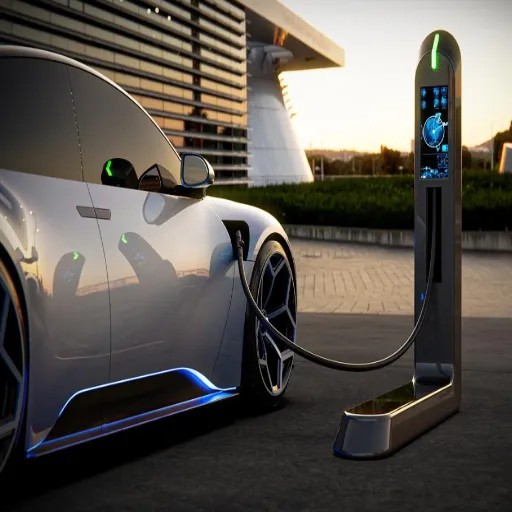
According to experts, modern EVs are equipped with numerous safety measures built into the charging process. As stated by industry professionals, fade-proof systems exist in EV batteries to counteract overriding hazards from overheating or overcharging, while the batteries themselves are rigorously tested to endure the heat and electrical currents. Agencies such as the U.S. Department of Energy further assert that charging systems and procedures are designed with safety in mind to minimize risks, strictly adhering to safety standards and protocols.
A report issued by a primary electric vehicle (EV) company states that the cabinets of safety while charging are guaranteed by advanced insulation and real-time monitoring systems, allowing users to remain in the vehicles without concern. Automotive experts also recommend certified charging stations and properly maintained equipment for the safe and efficient charging of cars. The combined insights of scientists and engineers consistently reveal the unwavering reliability of EV technology for its regular usage in day-to-day lives.
✅ Expert Conclusion
Yes, one can safely sit in an electric vehicle while it is being charged. Modern electric cars are manufactured to stringent safety standards, including insulation and grounding, to prevent electrical hazards. The charging equipment is also designed to shut off the power in the event of an issue. All these safety measures are in place to give the user confidence to stay in the vehicle while charging is in progress.
Future of Electric Vehicle Safety
The future of electric vehicle safety holds tremendous promise as the technology continues to gain momentum. Manufacturers are currently integrating state-of-the-art systems that include ADAS (Advanced Driver Assistance Systems), battery management technologies, and robust software updates for enhanced safety. Solid-state batteries, being less likely to overheat, combined with a good thermal management system, are expected to be among the innovations that will lower fire risks. In addition to enhanced protection in collisions, EVs are also being designed with improved structural integrity. The continual joint efforts by automakers and regulatory bodies ensure that safety standards keep pace with these technological changes, making EV users and pedestrians significantly safer.
🔮 Future Safety Innovations
🧠 ADAS Systems
Advanced Driver Assistance for enhanced safety
🔋 Solid-State Batteries
Lower overheating risks and improved safety
💻 Smart Software
Real-time updates and monitoring systems
Final Thoughts on EV Charging Practices
For me, electric charging practices are not just about convenience, but also about efficiency, sustainability, and safety. With innovative charging practices, time-off periods, and charging the battery to the percentages suggested over its lifespan, our batteries get a little mileage while being much kinder to the environment. Being aware of the development of charging infrastructure technology, along with relevant vectors, will ensure we travel responsibly with this electric vehicle technology.
🎯 Key Takeaways
✅ Safety Confirmed
Sitting in your EV while charging is completely safe with modern safety systems
🔒 Multiple Protections
Advanced insulation, monitoring, and automatic shutoff systems protect users
📏 Follow Guidelines
Always adhere to manufacturer recommendations and safety protocols
🚀 Future-Ready
EV safety technology continues to advance with new innovations
Reference Sources
“Electric vehicle waves of history: lessons learned about market deployment of electric vehicles”
“R&D of the Advanced Electric Vehicle at CATARC”
Frequently Asked Questions (FAQs)
Is it safe to sit in an electric car while charging?
It is mostly safe to sit in an electric car while it is charging. However, it is recommended that you follow some of the best safety practices to enjoy a wholesome and secure experience. However, a minor consideration when charging is that the inside temperature may increase, so proper ventilation is advisable.
Can you sit inside an electric vehicle while it charges?
Yes, you can sit inside your electric vehicle while it charges. All those who want to stay comfortable during a long charging session do this. Keep a close eye on both the battery and the charging session to help avoid any incidents associated with overheating.
What are the potential risks associated with sitting in an electric vehicle while it is charging?
Generally, it is safe to sit in an EV during charging; however, some risks exist. One such concern is heat production during the charging process that could cause overheating if the ventilation conditions are unfavorable. A serious concern arises for people about fire hazards, even though they rarely occur.
What can I do to ensure that it is safe to stay in an electric car while charging?
Follow safety guidelines to prevent the vehicle from becoming unsafe while charging. Keep the window slightly open for ventilation, avoid sitting in the car during high-power charging sessions, and regularly check the vehicle’s temperature to ensure it does not overheat.
What should I do if at any point I don’t feel comfortable sitting in my EV while it is charging?
If you are riding along or waiting in your EV during charging and feel uncomfortable, it is better to get outside and stay well away from the vehicle. If you experience unusual heat or smell odors, stop charging immediately and have a professional inspect for possible faults.
For how long can you sit inside the car while it’s charging?
One can sit inside the car anytime during charging, but it is generally advised not to spend the entire time inside to avoid heat discomfort. When charging takes a longer time, step outside a couple of times and do some deep breathing.
Do electric cars have safety features to protect occupants while charging?
Many safety features are installed in electric cars to ensure safety during their operation and charging. These features may include automatic shut-off of charging when overheating is detected and warnings when fire risks are present, allowing a seated person to feel secure.
Is it safe to sit inside an electric car while it is charging at home?
To summarize, sitting in an electric vehicle while charging at home is considered safe, provided you follow specific safety protocols, such as ensuring that the charging station is installed correctly and monitored, and that there is good ventilation to allow heat to dissipate from the charging process.
What does the WHO say about sitting inside your electric vehicle while it charges?
The WHO does not explicitly speak to the question of sitting inside an electric vehicle while it charges. They, however, caution against violating safety procedures and maintaining general awareness of the vehicle’s internal temperature to provide a safer and more comfortable experience.



